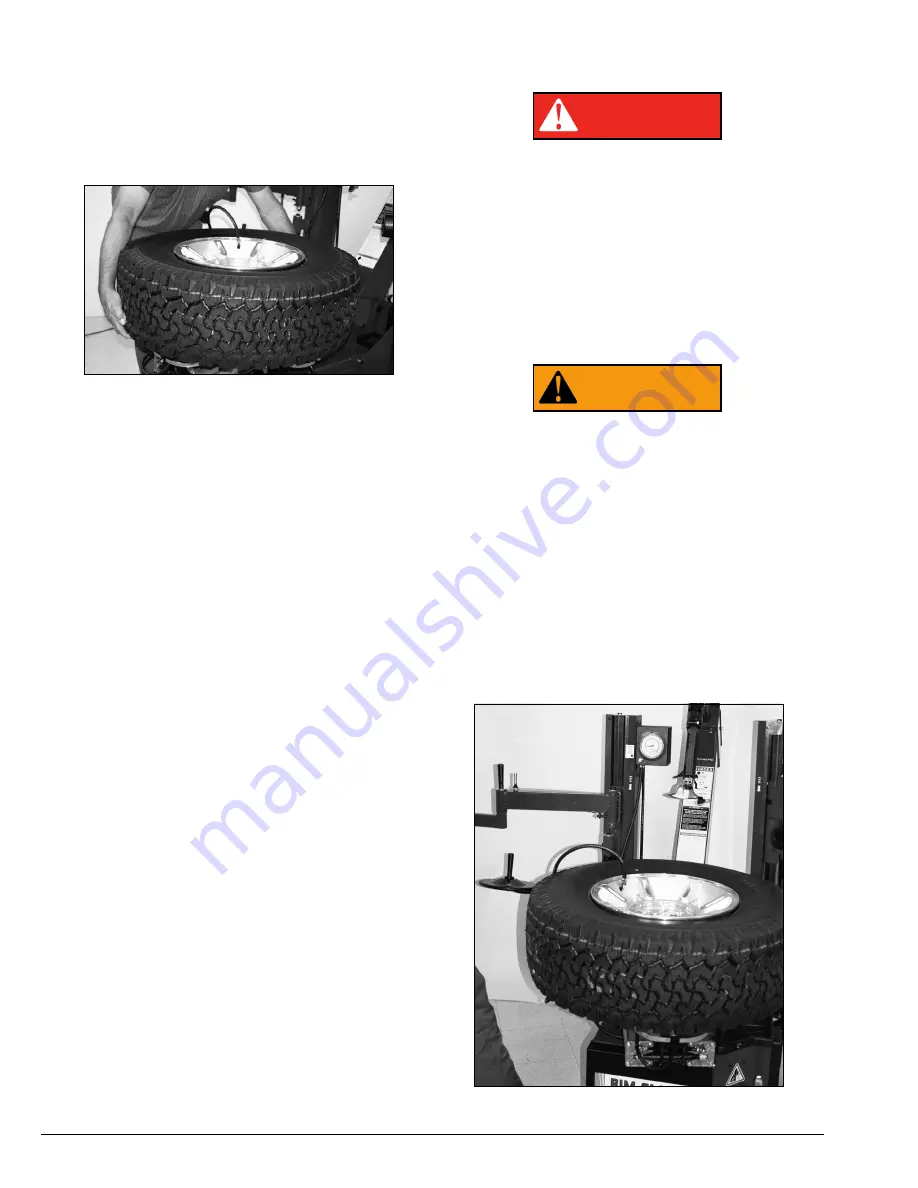
10 •
Important: Always read and follow the operating instructions.
Bead Sealing
1.
Position valve stem in front of operator and con-
nect the inflation hose with the clip-on chuck. Hold tire
up against upper edge of the wheel. Be sure tire’s top
bead does not cover the bottom of the valve stem (fig-
ure 20).
Figure 20 - Lift Tire Upwards for Bead Sealing
2.
Depress inflation pedal to position 2 and hold
about one second to begin air flow through tire valve,
then depress pedal to position 3 and hold briefly —
less than one full second. The blast of air from the jets
will expand tire and seal the beads.
3.
Release the inflation pedal and allow it to return to
position 1. Verify that both beads are completely sealed
to the wheel. Repeat these steps if beads have not
sealed. It may be necessary to wait a few seconds for
the air storage tank pressure to recover before
attempting again.
S.
If tire and wheel are properly lubricated and opera-
tor cannot achieve bead seal after three or four
attempts, the valve core may be removed from the
valve stem to allow more air flow into the tire to assist
with bead seal. After bead seal is achieved, remove the
clip-on chuck and reinstall the valve core. Reattach the
clip-on chuck after core is installed.
Bead Seating
NEVER exceed 40 PSI to seat beads while
using this tire changer. If more than 40 PSI is
permitted by tire manufacturer, ALWAYS use
safety cage and clip-on chuck. NEVER
exceed recommended pressure after seat-
ing beads. ALWAYS keep hands and entire
body back from inflating tire.
An exploding tire, wheel, or bead sealing
equipment may propel upward and out-
ward with sufficient force to cause serious
injury or death to operator or bystander.
Check tire pressure frequently. If operator is
unable to obtain Bead Seat, something is
wrong. Deflate tire completely, inspect tire
and wheel, correct any problems found,
relubricate both tire beads, and reattempt
Bead Seal and Seat procedures. Follow all
safety instructions in this manual and on
machine.
1.
Once tire pressure is indicated on the air gauge
(inflation pedal in position 1; foot removed from pedal),
continue to inject air into the tire (inflation pedal posi-
tion 2) in short intervals. Check the pressure fre-
quently. Stand back during bead seat. Keep hands,
arms, and entire body away from tire during this pro-
cedure (figure 21).
Figure 21 - Stand Back during Bead Seat
WARNING
DANGER































